Menodora scabra, Rough Menodora
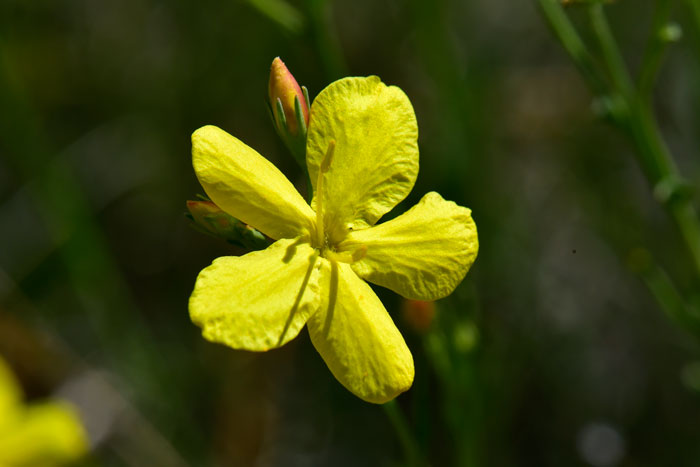
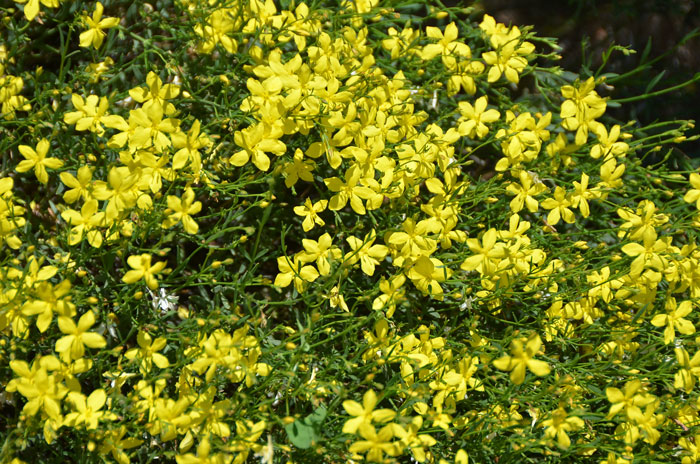
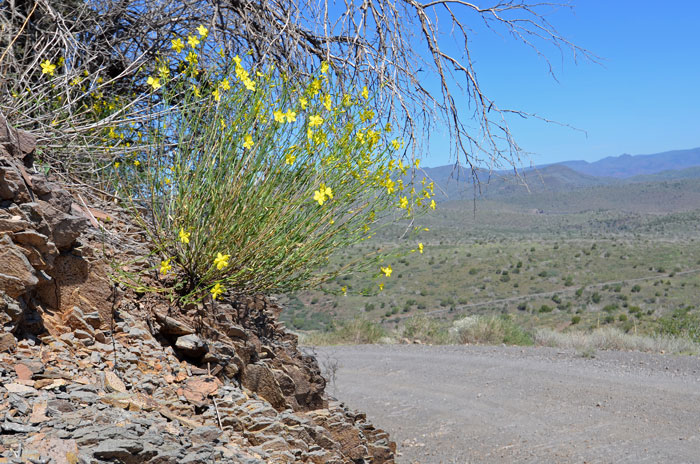
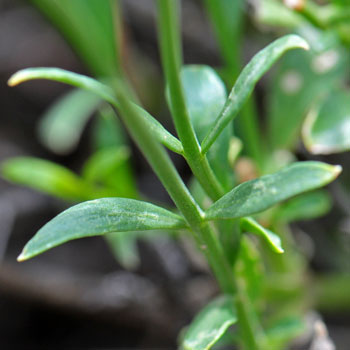
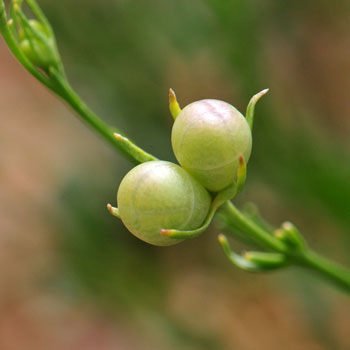
Scientific Name: Menodora scabra
Common Name: Rough Menodora
Also Called: Broom Menodora, Broom Twinberry, Twinfruit, Twinberry, Bull Balls
Family: Oleaceae, Olive Family
Synonyms: (Menodora scabra var. glabrescens, Menodora scabra var. laevis, Menodora scabra var. longituba, Menodora scabra var. ramosissima, Menodora scoparia)
Status: Native
Duration: Perennial
Size: 12 inches more or less.
Growth Form: Forb/herb, subshrub; stems scabrid to puberulous, multiple stems, broom-like from base, leafy, base woody, stems erect to ascending.
Leaves: Green; mostly alternate, shape variable oval, ovate, oblong or lanceolate, upper leaves smaller than basal leaves.
Flower Color: Yellow, bright- or pale-yellow; inflorescence loose terminal clusters, calyx lobes 7 or more, pubescent, both anthers and stigma exserted from corolla, fruit circumscissile capsule.
Flowering Season: March to September.
Elevation: 1,500 to 7,500 feet.
Habitat Preferences: Dry mesas, canyons, slopes, rocky hillsides.
Recorded Range: Menodora scabra is found in the southwest United States in AZ, CA, CO, NM, NV, TX and UT. It is also native to Baja California and central and northern Mexico.
North America & US County Distribution Map for Menodora scabra.
U.S. Weed Information: No information available.
Invasive/Noxious Weed Information: No information available.
Wetland Indicator: No information available.
Threatened/Endangered Information: No information available.
Genus Information: 5 species in Menodora in the southwestern United States. 2 species in Arizona and California, 3 species in New Mexico and 4 species in Texas.
The Plant List includes 44 scientific plant names of species rank for the genus Menodora. Of these 24 are accepted species names.
Comments:
Rough Menodora is used as a Navajo and Ramah drug for various purposes such as analgesic, gastrointestinal, and as a gynecological aid. See ethno-botanical uses at Native American Ethnobotany, University of Michigan, Dearborn.

